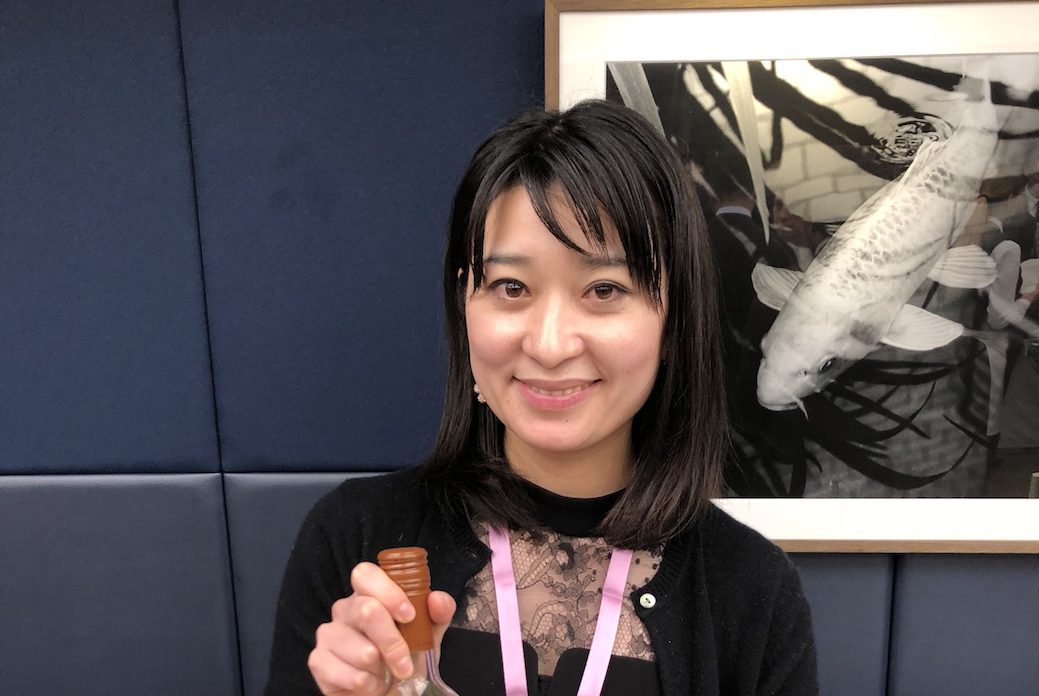Full tasting notes on seven magnificent Koshu wines, plus a masterclass hosted by Lynne Sherriff MW and Ronan Rayburn MS in which Koshu was tasted blind with some curve-balls thrown in just to make it extra hard.
The Koshu of Japan Annual Tasting is the one tasting on the calendar that is greeted with hushed tones when its date and venue is announced each year.
Maybe it’s the very polite insistence (but insistence nevertheless) on the invite that it is strictly for the trade and press – no riff raff is the subtext, and you get the feeling that when you register and you are told that your request is being considered that somewhere in Koshu Towers someone is rifling through your credit history and employment record and making sure you’ve never been done for shoplifting or fiddling your expenses.
Then the acceptance arrives and you can relax again, relax that is until the tasting itself, because this is a very serious affair. It is politeness personified, and whispering seems to be the preferred method of communication. I think the language barrier between many of the producers and the trade in attendance helps to maintain this stillness and level on concentration from all concerned; questions are asked and responded to, but not a great deal of detail is given, just the basics, which is often all that’s required. After all, the wines tell the stories themselves, and there were some very interesting stories on show at this year’s tasting.
16 Koshus, 9 producers and a range of styles

The Koshu tasting, 67 Pall Mall, London, February 2018
Hosted in the St James’s Room at 67 Pall Mall, there were nine producers in attendance showing 16 Koshus in total, plus a handful of red wines made from international varieties. This year the tasting was as much about showcasing the diversity of the Japanese* grape than it was about showing how brilliantly it can be done, which is testament to the work Koshu of Japan has done over the years in educating the trade about its benchmark style of delicate, citrusy, floral wines made with poise and precision.
These styles were present, of course, but so were others, including sparkling, oaked, orange and aged.
I’ve had some experience of Koshu in the past – when I worked as Comms Manager for wine importer Hallgarten I spent as much time as I could tasting with wine buyer Steve Daniel (the man with the golden tongue). The wines that most excited him in the tasting room and out-and-about were the ones he introduced to Hallgarten when it acquired his Novum portfolio, and this included Koshus from Grace Wine in Japan’s revered Yamanashi Provence.
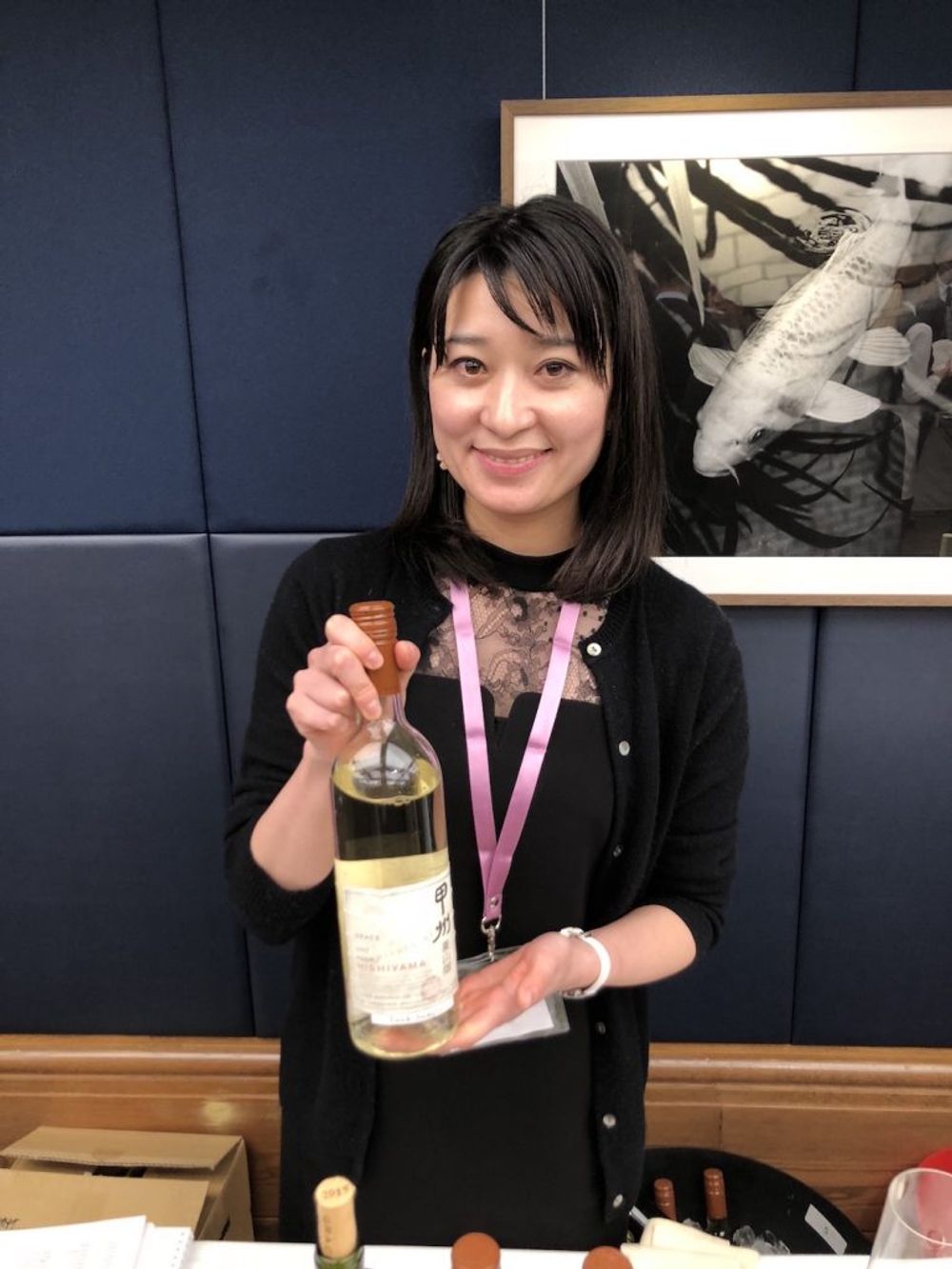
Winemaker Ayana Misawa from Grace Wine
It was this type of wine – pure, mineral, racy, esoteric and out-there – that Steve would rave about and encourage everyone in the company (not least the sales team) to taste and understand. It was this producer I made my first visit to at the Koshu tasting, so I could re-taste the Grace portfolio and calibrate my palate for what was to come.
What the tasting – and the day’s masterclass hosted by Lynne Sherriff MW and Ronan Rayburn MS (more on this shortly) – showed is that Koshu is no one-trick pony; it’s as versatile a grape as, say Chardonnay, and can produce wines that mimic in style and character those from more well-known and established regions.
The masterclass was designed to demonstrate this. Following a little bit of history on Japan – its wine-producing heritage, climate and geography, and a look at the Koshu grape and how it came to become Japan’s signature varietal – there was an 11-flight blind tasting. We were told that not all the wines were Koshu and had to try to work out what was what.
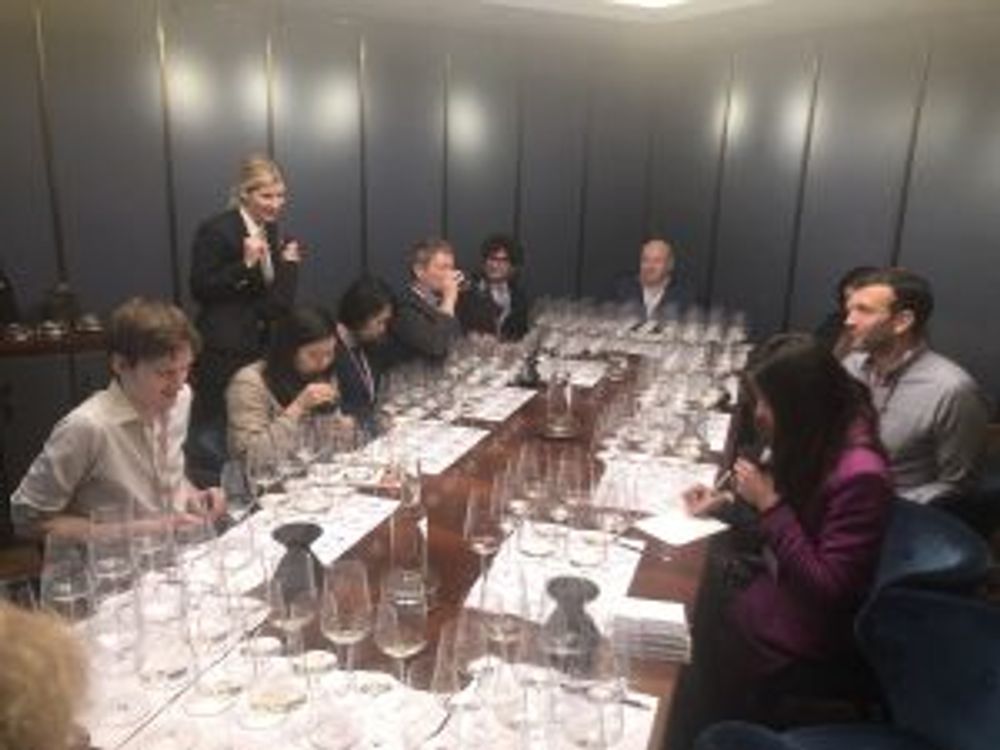
It was an interesting, not to say painfully difficult, experiment, where two Chardonnay wines were thrown into the mix (one from Japan, one from Chablis), as well as sparkling and oaked styles of Koshu. You’d be forgiven – and some were – for thinking what some of the wines were from Greece or Champagne, rather than Japan, but that just shows how adaptable Koshu is and how it can gain a reputation for wines separate to its signature, roundly-acknowledged style.
Here a few of the more interesting wines from the tasting, starting with the benchmark ‘classic’ from Grace.
Grace Wine Koshu Private Reserve, 2017
Creamy, aromatic and full with apple, lily and unripe peach characters. There’s a haunting freshness here that hits you first like sea salt spray but finishes on the palate with a smash of lime acidity. Some white pepper spice and wet stone adds complexity. So good.
Soryu Winery Koshu, 2017
There’s a pink tinge to this Koshu (which is not seen elsewhere in the room, despite the grape variety having a dusky pink colour) with the wine glistening pink when poured but then the colour almost disappearing. There’s a chewy, woody edge that’s probably from the grape tannins, as the wine has seen no oak. It’s fresh with lime and honey and a precise acidity.
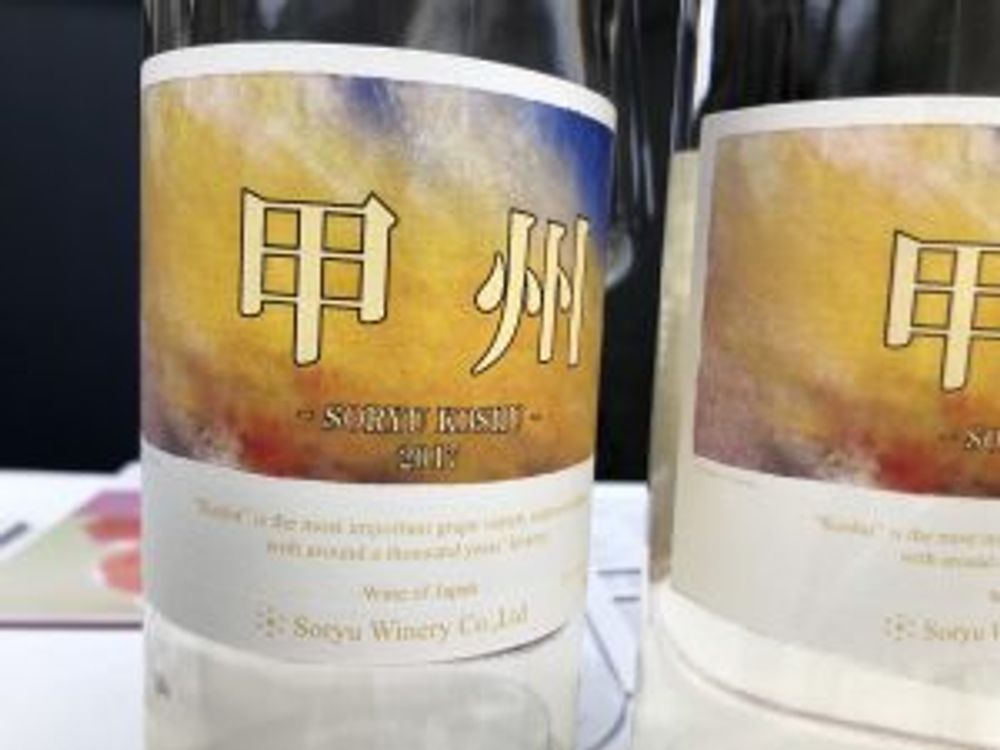
Marquis Winery Iro Koshu, 2015
Bright, clean and light, this shines with crisp cider apple acidity before sweet nougat characters drift in. It’s more developed than many of the other Koshus, perhaps due to its age, and is so smooth. A delicate stunner that offers more than just soft fruit, acidity and minerality.
Tomi No Oka Winery Koshu, 2016
Old French oak barrels are used to age 30% of this wine, which adds texture and a creaminess that’s not evident elsewhere. It’s still the strong acid backbone and green and citrus fruit that punches through though, and there’s a delicious apple and lemon finish.
Lumiere Winery Sparkling Koshu, 2015
Taste-wise this is fruity and bright with just a hint of complexity and bready-ness, but to get there you have to get through the bubbles. There’s a lot of gushing in mouth with lively fizz giving off plenty of CO2 that masks some of the delicate fruit notes. Slightly sweet and metallic aftertaste.
Lumiere Winery Koshu Prestige Class Orange
It looks like Tizer, so clearly an ‘Orange’ wine in that respect, but it’s not colour than defines orange wine, it is process. This is produced using carbonic maceration and spends some time post-fermentation on the skins. It’s chewy and complex with an oxidative edge and a lovely lick of green apple acidity. Balanced and very interesting… the kind of thing that get sommeliers all hot under the collar.
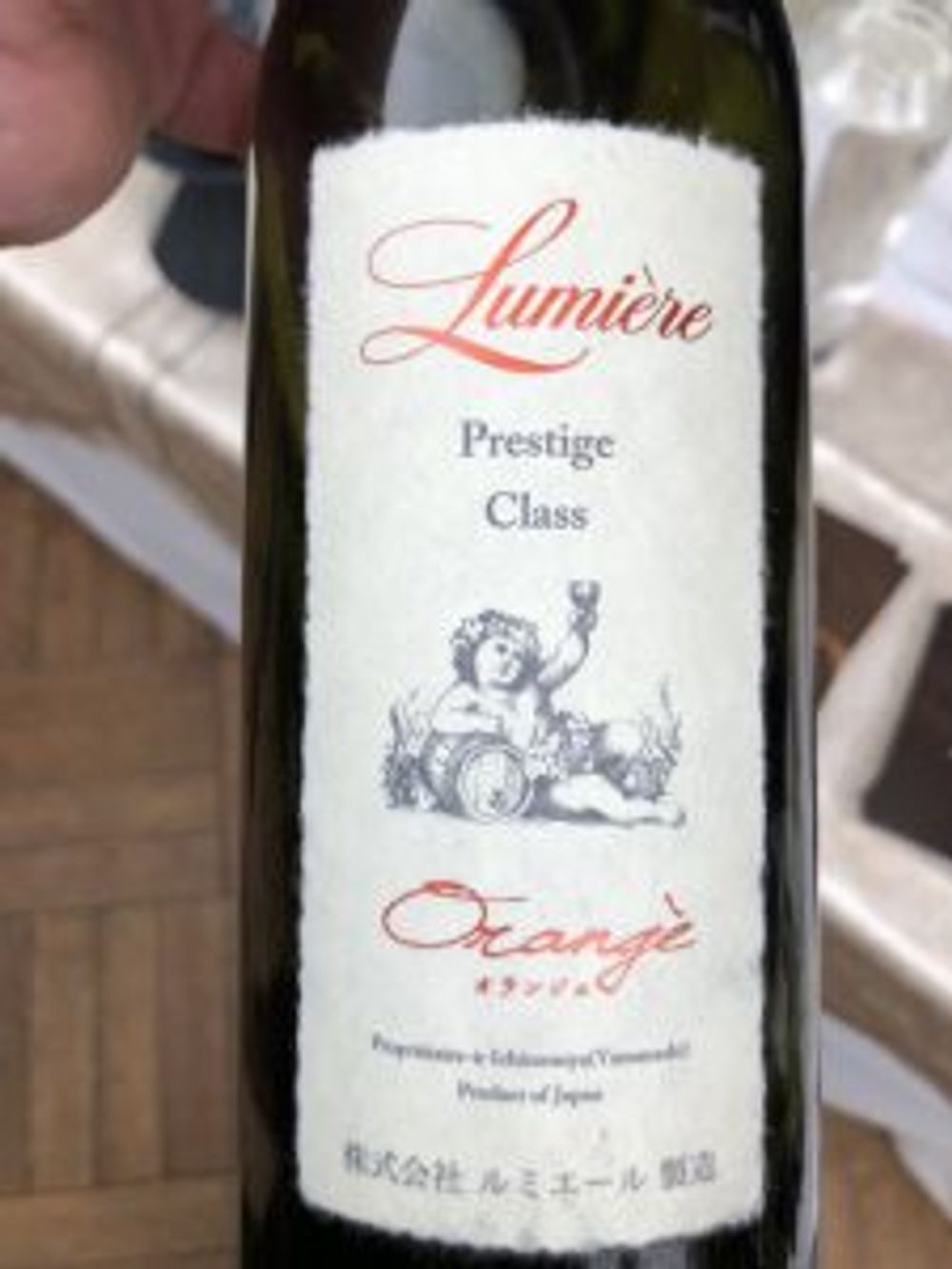
Aruga Branca Pipa 2014
Another oaked Koshu, this time seven months in new French oak for 10% of the wine. It’s darker than most of the other Koshus on show and has a Chardonnay creaminess to it. There’s bold stone fruit with tropical hints and a crispbread note lingering in the shadows. Lovely oak integration too, very impressive.
*Koshu is probably from Georgia and got to Japan via the Silk Road. It is not 100% Vitis vinifera, its full make-up is still being worked out.
